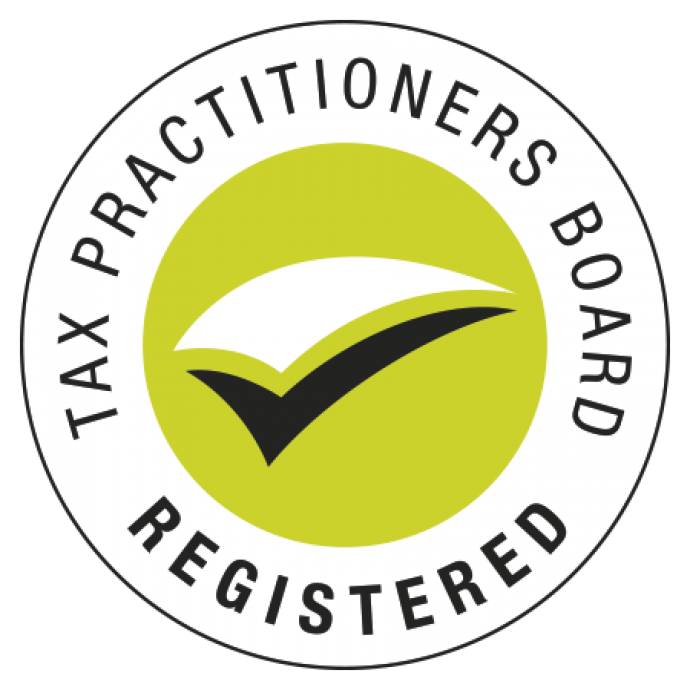Process Payroll with Confidence: Easy Steps to Follow
Introduction
Effective payroll processing is crucial for any business, ensuring employees are paid accurately and on time. Accurate payroll management not only boosts employee morale but also helps maintain compliance with tax regulations. In this article, you’ll learn a step-by-step guide on how to process payroll with confidence.
By following these steps, you can streamline your payroll operations and mitigate potential errors:
- Understanding Payroll Processing
- Exploring Different Types of Payroll Processing Systems
- Preparing for Payroll Processing
- Creating a Comprehensive Payroll Policy
- Setting Up Time Tracking Systems
- Calculating Employee Pay
- Approving and Submitting Payroll Payments
- Maintaining Payroll Records
For further insights into the challenges of manual payroll systems, visit Manual Payroll System – The Real Cost of Payroll or understand key Payroll Terminology.
Step 1: Understanding Payroll Processing
Effective payroll processing is the backbone of any business’s financial health. It ensures that employees are paid accurately and timely, which directly influences job satisfaction and company morale.
Definition of Payroll Processing
Payroll processing involves the administration of an organization’s employee wages. This includes calculating total earnings, subtracting deductions, and distributing payments. Accurate payroll processing is crucial for compliance with tax laws and maintaining employee trust.
Key Terms Explained
- Gross Pay: The total amount earned by an employee before any deductions are made. This includes salaries, wages, bonuses, and overtime pay.
- Net Pay: The amount left after all deductions have been subtracted from the gross pay. This is the actual amount an employee takes home.
- Payroll Records Maintenance: Keeping detailed records of all payroll transactions. This is important for both legal compliance and financial auditing.
Maintaining accurate payroll records not only helps in complying with regulations but also provides a clear financial trail for audits and internal reviews. For further insights into legal aspects related to payroll, you might find our blog on federal court decisions useful.
Understanding these fundamentals lays the groundwork for more advanced payroll management techniques, making your business operations smooth and compliant.
Step 2: Exploring Different Types of Payroll Processing Systems
Understanding the different types of payroll processing systems helps you choose the best solution for your business needs. There are two main approaches:
Manual Payroll Processing
Manual payroll involves calculating and recording payroll information by hand or using basic tools like spreadsheets.
Benefits:
- Cost-effective for very small businesses.
- Complete control over every aspect of payroll.
Drawbacks:
- Time-consuming and prone to human error.
- Difficult to keep up with changing tax laws and regulations.
Automated Payroll Systems
Automated systems, such as payroll software, streamline the process by automating calculations, tax filings, and direct deposits.
Benefits:
- Saves time and reduces errors.
- Easily handles complex calculations and compliance requirements.
Drawbacks:
- Initial setup costs can be high.
- Requires some level of technical knowledge.
Payroll Service Providers
Outsourcing payroll to service providers offers an alternative when managing payroll internally becomes too complex or time-consuming.
When to Consider Outsourcing:
- Limited in-house expertise in payroll management.
- Desire to focus on core business activities without worrying about compliance issues.
Step 3: Preparing for Payroll Processing
Gathering accurate employee information is crucial for seamless payroll processing. You need to collect essential details such as the Employer Identification Number (EIN) and tax ID numbers. This ensures that your payroll calculations are accurate and comply with federal and state regulations.
Employee benefits also play a significant role in payroll processing. Understanding how these benefits interact with payroll helps maintain compliance with tax regulations. For example:
- Health insurance contributions
- Retirement plan deductions
- Flexible spending accounts
Accurate records on these benefits ensure correct deductions and avoid potential legal issues.
Step 4: Creating a Comprehensive Payroll Policy
Creating a comprehensive payroll policy is crucial for streamlining payroll processes and ensuring consistency. Key elements to focus on include:
- Payroll Schedules: Define how frequently employees will be paid (e.g., weekly, bi-weekly, monthly). Clearly communicate these schedules to avoid confusion.
- Payment Methods: Decide on the methods you’ll use to issue payments—direct deposit, checks, or other forms. Standardizing payment methods can simplify the process.
- Deductions: Specify which deductions will be taken out of employee paychecks. This includes mandatory deductions like taxes (federal, state, local), as well as voluntary deductions for benefits such as health insurance and retirement plans.
Understanding the role of Form W-4 in your payroll policy is essential. This form allows employees to indicate their tax situation to their employer, which affects federal income tax withholding. Essential points include:
- Tax Withholding: Employees complete Form W-4 to determine the amount of federal income tax withheld from their paychecks.
- Adjustments: Encourage employees to review and update their Form W-4 annually or after any significant life changes that might affect their tax situation.
Establishing a clear payroll policy ensures that all payroll-related activities are conducted smoothly and in compliance with legal requirements.
Step 5: Setting Up Time Tracking Systems for Accurate Pay Calculation
Accurate pay calculations rely heavily on the precise tracking of employee hours. Implementing an effective time-tracking system can streamline this process and minimize errors.
Methods for Tracking Employee Hours
There are two primary methods for tracking employee hours:
Manual Time Tracking:
- Employees record their hours using paper timesheets or spreadsheets.
- Simple to implement but prone to human error and time theft.
Automated Time Tracking:
- Utilizes software or biometric systems to log hours automatically.
- Reduces errors and provides real-time data, although it may require an initial investment.
- Collecting timesheets before payroll processing begins is crucial, regardless of the method used. This ensures that all recorded hours are accounted for and verified.
- For a seamless transition from manual to automated systems, consider our conversion service to migrate your accounting software efficiently.
Importance of Collecting Timesheets
- Accuracy: Ensures all hours worked are correctly recorded.
- Compliance: Helps meet legal requirements for record-keeping.
- Efficiency: Streamlines the payroll process by providing clear data.
For additional tips on maintaining accurate records, check out our EOFY housekeeping tips.
Step 6: Calculating Employee Pay with Precision
Calculating employee pay accurately is a crucial aspect of payroll processing. Incorrect calculations can lead to disputes and legal issues. Here’s a step-by-step guide to ensure precision.
Step-by-Step Calculation of Gross Pay
1. Hourly Employees:
- Determine Hours Worked: Collect timesheets or use automated tracking systems to determine the total hours worked.
- Calculate Regular Pay: Multiply the total hours by the hourly wage rate.
- Overtime Pay: If applicable, calculate overtime pay by multiplying the overtime hours by 1.5 times the regular hourly rate.
2. Salaried Employees:
- Annual Salary: Divide the annual salary by the number of pay periods in the year (e.g., weekly, bi-weekly, monthly).
- Part-time Adjustments: If the salaried employee works part-time, adjust their pay accordingly based on their agreed-upon working hours.
Understanding Deductions and Taxes in Payroll Processing
Deductions are amounts subtracted from an employee’s gross pay. These can include:
Taxes:
- Federal Income Tax: Withheld based on the employee’s Form W-4 and IRS tax tables.
- State and Local Taxes: Vary depending on location.
Benefits:
- Health Insurance: Employee contributions towards health insurance plans.
- Retirement Plans: Contributions to 401(k) or other retirement savings plans.
Mandatory Deductions:
- Social Security and Medicare: Known as FICA taxes, these are mandatory deductions that fund Social Security and Medicare programs.
- Wage Garnishments: Court-ordered deductions for debts such as child support or unpaid loans. Compliance with garnishment orders is critical to avoid legal penalties.
For more insights on payroll complexities, you may find this article helpful.
IRS Regulations
Adhering to IRS regulations ensures compliance and avoids penalties:
- Reporting Requirements: Ensure all deductions and taxes are accurately reported in payroll tax filings.
- Form W-2: Provide employees with Form W-2 summarizing their earnings and tax deductions.
Maintaining compliance with these regulations is essential for smooth payroll operations. Continue exploring resources like iKeep for ongoing support in managing your business finances efficiently.
Step 7: Approving and Submitting Payroll Payments Effectively
Accurate payroll processing hinges on meticulous review before issuing payments. Ensuring the correctness of calculations prevents errors that could lead to employee dissatisfaction or compliance issues.
Key Steps:
- Review Calculations: Double-check all deductions, taxes, and gross pay figures to ensure accuracy.
- Payment Methods: Decide between direct deposit and paper checks. Direct deposit is convenient and faster, while paper checks might be preferred in some cases.
Direct Deposit Benefits:
- Faster transaction times
- Reduced risk of lost or stolen checks
- Environmentally friendly
Paper Checks Benefits:
- Tangible proof of payment
- Useful for employees without bank accounts
- Providing detailed pay stubs is crucial for transparency. Pay stubs should include:
- Gross pay
- Deductions (taxes, benefits)
- Net pay
- Year-to-date totals
This not only helps employees understand their pay but also ensures compliance with legal requirements.
For more insights on improving payroll accuracy and efficiency, consider exploring our blog on outsourced bookkeeping. This resource provides valuable information on leveraging external expertise to streamline your financial processes.
In busy periods like the festive season, as discussed in our article on the aged care season, maintaining payroll accuracy becomes even more critical. Ensuring timely and accurate payments during such times can enhance employee satisfaction and operational efficiency.
Step 8: Maintaining Payroll Records for Compliance
Maintaining accurate payroll records is a critical aspect of payroll processing. Compliance with tax laws and other regulatory requirements hinges on your ability to keep detailed and precise records.
Best Practices for Payroll Records Maintenance
Record Retention: Ensure that all payroll records are retained for a minimum of three years. This includes timesheets, pay stubs, tax filings, and any other relevant documentation.
- Digital Storage Solutions: Utilize digital storage solutions to safeguard your records against physical damage or loss. Cloud-based systems can provide secure and accessible storage options.
- Regular Audits: Conduct regular audits of your payroll records to ensure accuracy and completeness. This practice helps identify discrepancies early and correct them promptly.
- Compliance Checks: Regularly review updates to tax laws to ensure ongoing compliance. Implementing an automated payroll system can help in staying updated with the latest regulations.
Legal Requirements
- Tax Documentation: Maintain copies of all tax filings, including quarterly and annual reports.
- Employee Records: Keep comprehensive records for each employee, including personal details, employment contracts, and benefit information.
- Payroll Registers: Store detailed payroll registers showing gross pay, net pay, deductions, and contributions.
Incorporating these practices not only ensures compliance but also streamlines your payroll process, making it easier to manage and less prone to errors.
For insights on choosing the best outsourced accounting services, visit How to Choose the Best Outsourced Accounting Services. Additionally, see Local vs Outsourced Bookkeeping Services for a Melbourne perspective on bookkeeping solutions that might enhance your record maintenance strategy.
These steps will help you maintain accurate records throughout the payroll process while ensuring compliance with tax laws and other legal requirements.
Resources for Ongoing Payroll Management Success
Effective payroll management doesn’t end with initial setup. To ensure long-term success and compliance, leveraging the right resources is crucial.
Templates and Tools
Utilize various templates and tools designed to streamline payroll processes:
- Payroll Calculation Templates: Simplify calculations using pre-built spreadsheet templates.
- Time Tracking Software: Automate the collection of employee hours with tools like TSheets or Clockify.
- Payroll Software: Consider software solutions such as Gusto or QuickBooks Payroll for seamless payroll processing.
Leveraging Professional Support
Consider seeking assistance from experts to maintain high standards:
- Consulting Services: Engage professional accountants or bookkeepers for tailored advice.
- Outsourcing Payroll: Partner with a payroll service provider to handle complex tasks efficiently.
By consistently utilizing these resources, you can ensure that your payroll process remains accurate, compliant, and efficient. Embrace available technology solutions and expert support to navigate the complexities of payroll management confidently.
Conclusion
Implementing the steps outlined in this article can significantly enhance your payroll processing capabilities. By embracing available resources and technology solutions, you pave the way for long-term success in payroll management.
Steps to Take Action:
- Understand Payroll Processing: Grasping key concepts like gross pay, net pay, and the importance of accurate records.
- Explore Payroll Systems: Evaluate manual versus automated systems and consider outsourcing if needed.
- Prepare Accurately: Gather essential employee information and understand tax compliance.
- Create a Payroll Policy: Establish clear guidelines for schedules, payment methods, and deductions.
- Set Up Time Tracking Systems: Ensure precise tracking of employee hours.
- Calculate Pay Precisely: Follow step-by-step methods for accurate gross pay and deductions.
- Approve and Submit Payments: Review calculations meticulously before issuing payments.
- Maintain Compliance: Keep accurate records as per legal requirements.
For more insights on optimizing your financial management, check out our deep dive into outsourced bookkeeping solutions in Melbourne. If you’re evaluating accounting software options, our comparison of Xero vs. QuickBooks can guide you in making the right choice for your business.




